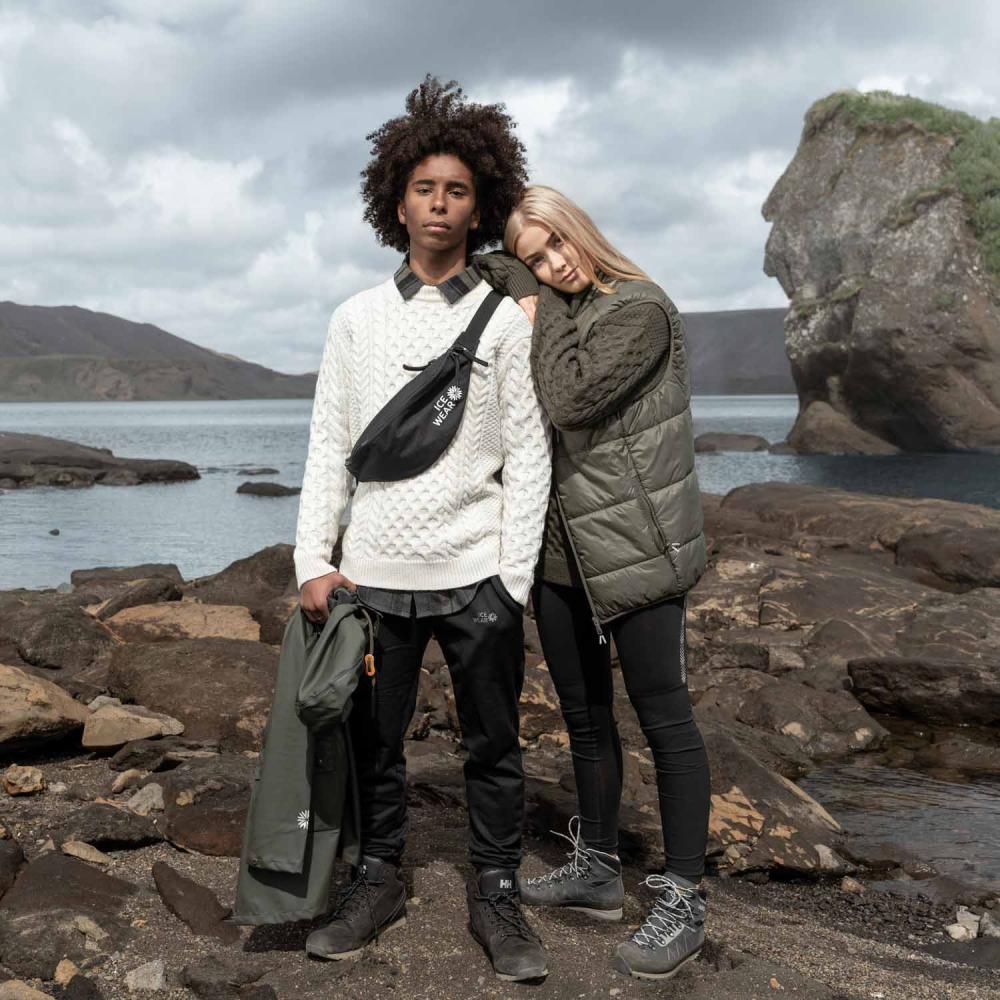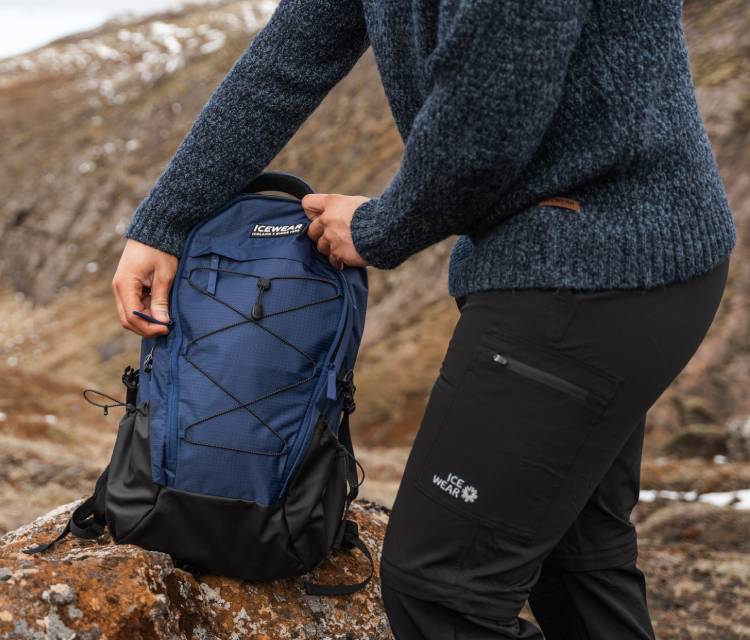Staying warm and cozy is at the heart of Icewear’s clothing line, whether that’s on the hiking trails or under the blankets at bedtime.
Warmth has a tangible impact on your life because it helps you maintain a comfortable body temperature while also optimizing blood flow, leading to better sleep and a more effective regeneration cycle each night. With that, one unsung component of better sleep is wearing gloves and socks, which many people today would be surprised by.
Sleep science includes everything from ideal sleeping positions to survey data around how many people actively look to improve their quality of sleep. The impact that better sleep can have on life is colossal, and yet few people devote time or energy to learning how to sleep better.
What works for one person won’t always work for another, it’s true. Factors like climate come into play as well. In the animal kingdom, sleep needs range from a python’s 18-hour sleep cycle to a giraffe’s average of one to two hours a night. In humans, sleep needs won’t vary quite as much as they do across species, but there is something to be said about unique preferences and needs.
Whatever that “magic number” is for you, getting enough quality sleep is a fundamental part of maintaining your health. And who would have thought that you could avoid sleep-deprivation by simply putting on a pair of socks?
Statistics on Sleep
Although almost one third of working adults (32.6%) report sleeping six or fewer hours a night in 2018 (up 28% from 2009), it’s not just the number of hours you get that affects you later. It’s also the quality of sleep you get.
Did you ever stop to think how your bedtime clothing could be helping or hurting your sleep? Could you be putting yourself at risk every time you put on your pajamas?
According to a 2004 survey by ABC News, only 50% of women and 13% of men wore some form of nightgown pajama. Those who wore pajama pants and shirt sets represented only 5%, and the majority of respondents said they sleep naked or in their underwear.
The modest number of hours that the average adult sleeps has been driven to a new and unhealthy shortage thanks to increased work and screen time, however quality of sleep is at greater risk today if people aren’t wearing pajamas. And there’s science to explain why.
The first takeaway is that pajamas are important in regulating body temperature and to aid the psychology of sleep. The right pajamas will lock your body heat in and circulate it around your bed and body, while also allowing excess heat to breathe through the fibers as your temperature changes throughout the night. The simple act of putting your pajamas on, too, produces melatonin to naturally queue your body into “sleep mode.”
By simply wearing pajamas, you improve your quality of sleep and, therefore, your quality of life. You will:
- Feel more alert during the day (driver sleepiness contributes to 20% of accidents)
- Prevent illness
- Aid hygiene
- Improve circulation (and the body’s natural regeneration cycle)
The Importance of a Comfortable Sleeping Suit
Feeling comfortable and warm in your pajamas aids faster, deeper sleep. Cold temperatures adversely affect deep sleep and REM cycles more than overly warm temperatures. If you are going to err, it’s best to err on the warm side.
Warming your feet, specifically, will bring surprising benefits, too. According to the National Sleep Foundation, warming your feet before you go to bed gives your brain a clear sleep signal to start producing melatonin, the natural chemical that tells your body it’s bedtime. Wearing warm, Merino wool socks is the easiest and most comfortable way to keep your feet warm all night long.
The right pajamas start with your choice of sleeping gown or nightshirt and pants. Then, wool Merino socks keep your feet warm, and soft Merino gloves give you an even bigger boost of improved circulation in your hands and arms.
Ideal Sleeping Positions
Sleep is as important when we’re “catching Zs” as it is during waking hours when it manifests in our energy levels and capacity to concentrate. Starting with blood circulation and body temperature, there’s clearly more to solid sleep than most think.
Healthy sleeping habits also come down to the positions we sleep in.
If you struggle to sleep and sleep well, any one or a combination of the factors discussed in this article might be to blame. Try switching things up one-by-one to get to the heart of what’s going on.
When it comes time to test different sleeping positions, these are the three most commonly recommended:
- Sleeping in the fetal position:
This is the most popular sleep position and comes with loads of benefits. The position cups body heat in around your core (which keeps essential organs warm), is good for lower back pain, and is the most comfortable position for pregnant women. This sleeping position also helps reduce snoring. - Sleeping on your (left) side:
If you do sleep on your side, sleeping on the left side is best for digestion and to reduce heartburn. Either way you flip, this sleep position is also great to help reduce snoring. - Sleeping on your back:
This sleep position is often touted as the one that brings the most health benefits. It’s known to help reduce hip and knee pain, for one. If you tuck a pillow behind your knees, too, this is helpful to reduce back pain as well.
Sleep in cold nights
Headquartered in the heart of Reykjavik, Iceland, Icewear knows something about cold nights.
Have you ever wondered how many hours Icelanders see the sun in Reykjavik during winter? The answer is “few.” Long, cold nights don’t rob anyone of good sleep, however, as long as they dress right.
Sleeping under a heavy wool blanket is another way to regulate body temperature and sleep better. As you sink into the bed under the weight of that soft, warm wool, your body continually heats the air under the blanket and keeps every inch of you warm.
Sleep Environment Tips Straight from Iceland
Advocacy for solid sleep has grown in recent years in tandem with available information from smart devices and sleep trackers. And now, more people have realized just how important it is to practice good sleep habits and build better sleep environments.
The optimal environment for sleep is quiet, dark, and cooler than you might think. As a result, Iceland’s population has come to some of the best sleep practices naturally as a result of the climate there.
For instance, even babies in Iceland sleep outside in the cold (even in winter) as long as they’re well dressed and wrapped in wool blankets. And because of the long days in summer (with as little as two or three hours of darkness at night), sun-blocking solutions at home have become the mainstay for Icelanders.
Dig a little deeper into the science of temperature and light, and you’ll be on your way to the best sleep you’ve ever had.
Cool Temperatures Form a Better Sleep Environment
If you often sleep restlessly, you might have a room temperature above the optimum temperature for sleep. Warm temperatures cause a decrease in rapid eye movement (REM) sleep, or the dream stage. High humidity compounds these problems.
Keeping your room cooler is better for sleep because your body and the right pajamas regulate temperature naturally. A thermostat set to 68, on the other hand, will maintain a constant temperature no matter what’s going on in your body, and if the temperature’s too high you’ll sleep restlessly as a product.
It’s only your body you need to keep warm at night, not every corner of the room. Thus, we return to pajamas.
Wool is extraordinarily beneficial in sleep garments because of its ability to regulate body temperature through the wool’s crimp. Your body heat will pulsate under the fibers of your Merino wool socks or other wool knit pajamas, keeping you warm and cozy but at the same time allowing for the natural expulsion of excess heat through the fibers when your body temperature climbs.
To better regulate temperatures in your home:
- Set your thermostat to drop during sleeping hours.
- Install a fan in your bedroom to keep the flow of air constant while you sleep.
- Open windows while you get ready for bed to bring in some cooler air, then shut them again when you’re ready to lay down.
Blackout Drapery for Cosy Sleep
Keeping your sleeping environment totally dark is another “must” in your sleeping environment. In Iceland, with days as long as 22 hours at the summer solstice, this would be impossible without sun-blocking drapes (or “blackout drapery”).
Blackout drapes provide better sleep and also save money. By blocking up to 99% of sunlight from entering a room, this also helps block the loss of thermal energy. Most homes lose around 10% of their thermal energy through their windows, but blackout drapery reduces this significantly. Homeowners report energy bills on average 25% lower after blackout drapes were installed.
Blackout drapes keep your home’s heat in during the winter and block sun from entering and heating the space in the summer.
With blackout drapes, optimal temperatures, and the softest and most breathable wool socks and pajamas, slipping into bed becomes as pleasurable as slipping into a hot bath. Let the right sleep environment, sleep positions and clothing choices deliver you to your sweetest dreams yet.
Sleepy yet? View some of Icewear’s Merino wool socks and gloves, then get ready for bed!
Bibliography:
- https://www.almanac.com/wearing-socks-bed-warm-feet-better-sleep
- https://www.cdc.gov/mmwr/volumes/69/wr/mm6916a5.htm
- https://abcnews.go.com/images/Politics/959a1AmericanSexSurvey
- http://cks.nice.org.uk/insomnia#!uptodate.pdf
- https://sleepopolis.com/education/sleeping-with-socks-on/
- https://www.ncbi.nlm.nih.gov/pmc/articles/PMC3427038/#B40
- https://sleep.org/articles/wearing-socks-to-bed/
- https://www.healthline.com/health/healthy-sleep/sleep-effects-digestion#side-sleeping
- https://www.healthline.com/health/back-pain-management
- https://www.icewear.is/us/blog/2020/03/28/is-iceland-dark-for-6-months-in-winter-time/
- https://www.hopkinsmedicine.org/health/wellness-and-prevention/do-sleep-trackers-really-work
- https://www.livingwoodwindows.co.uk/heat-loss-through-windows/












